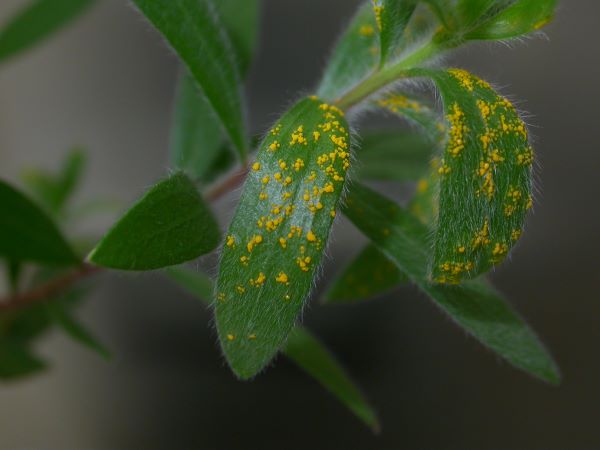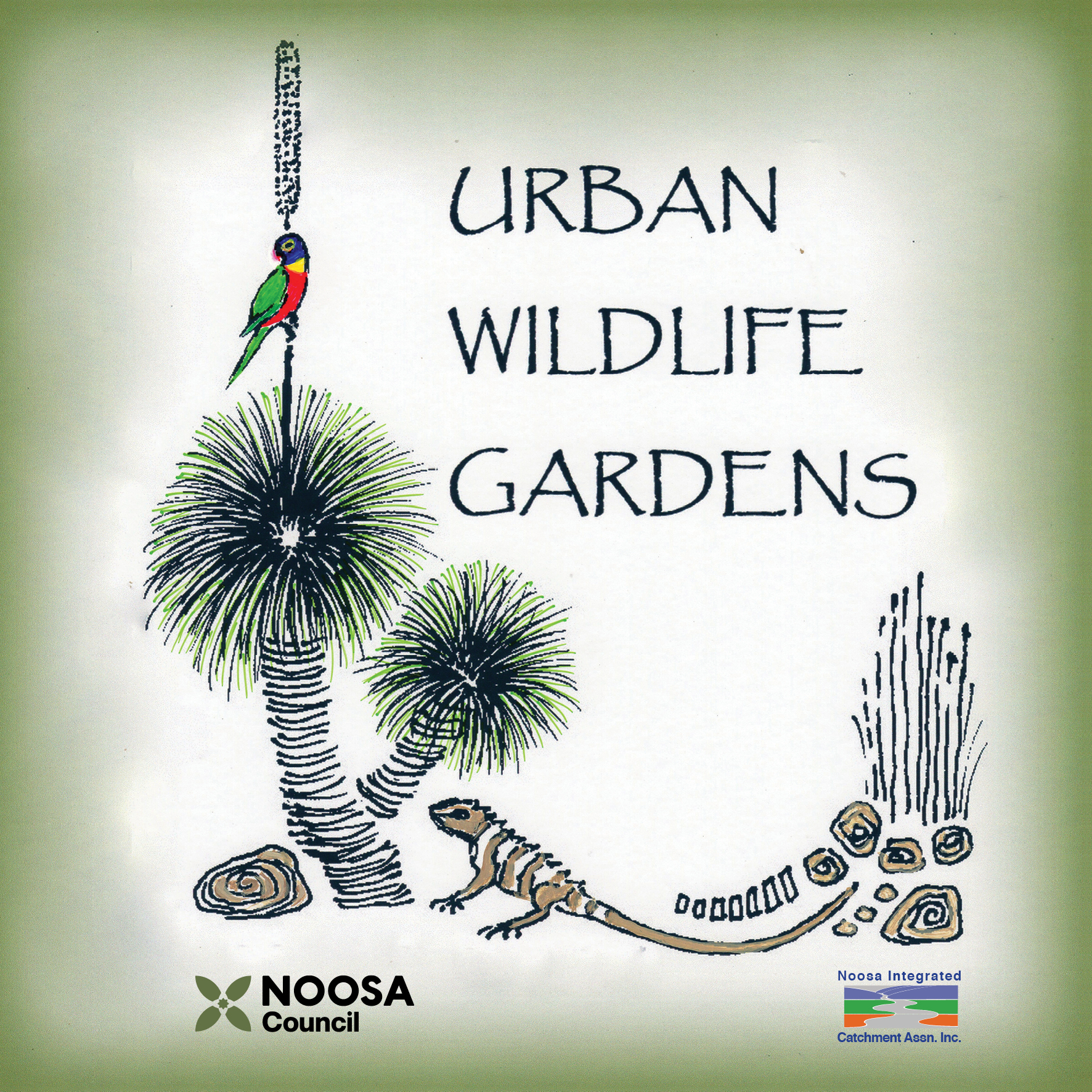Photo thanks to CSIRO

Myrtle rust Austropuccinia psidii was first found on the Sunshine coast about 10 years ago. Its thought the pathogen was introduced into Australia by the nursery industry importing plants. At the time the hope was to eradicate it and the Council was seen pruning effected plants along Gympie terrace. The recommended treatment was to carefully remove all growth that was covered in the orange dust, place in a plastic bin bag, double bag and put in the bin. Unfortunately due to the spores (reproductive structures) being spread by wind this approach didn’t work.
After a time the bagging method was discarded and all that could be done was to hope the bush could recover. Myrtle rust as the name suggests, grows on members of the Myrtaceae family. This family includes the gum trees, ( Eucalyptus Angophora Corymbia) bottle brush, (Callistemon) Lilly pillys ( Syzgium) and tea trees and paper barks (Melaleuca).
The rust seems to be particularly fond of Rose apple Syzgium jambos. This Lilly pilly isn’t a local species but is very common in the Noosa shire. Its hard to find a specimen that isn’t harbouring the rust. More of a concern for our local ecology is the susceptibility of Melaleuca quinquenervia the common paperbark. The rust is often seen one the tips of young plants and can cause death.
The infection starts off looking like the new growth has been sprinkled with orange icing sugar. Then the leaves begin to shrivel and turn black. A plant in the later stages of infection has the same appearance of a plant that has been burnt. By this stage the icing sugar like substance is harder to see. Not all plants that have Myrtle rust will die.
What can be done? When buying plants from the Myrtaceae family look closely for any signs of the rust and don’t purchase if present. Keep a close eye on new plants once you get them home. Consider removing any plants from your garden that have Myrtle rust especially if they aren’t local natives or treat with a fungicide. Guidelines will change as scientists learn more about the rust and the best ways to manage it.
Hopefully, our beautiful Australian plants can fight back and build a resilience.
The link below provides more information
www.dpi.nsw.gov.au/biosecurity/plant/insect-pests-and-plant-diseases/myrtle-rust
By Michelle Newall
